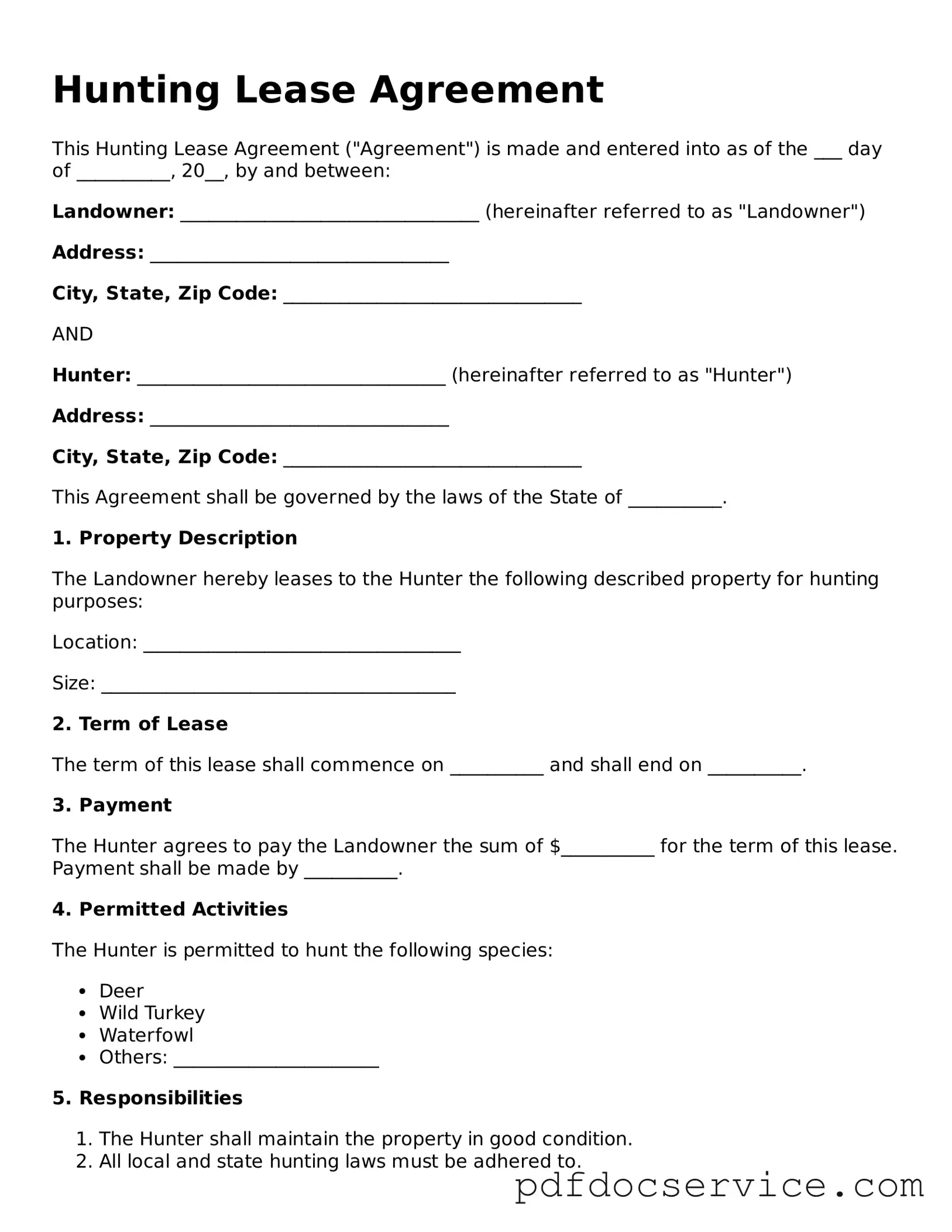When it comes to enjoying the great outdoors through hunting, having a well-structured Hunting Lease Agreement can make all the difference. This essential document serves as a contract between landowners and hunters, outlining the rights and responsibilities of both parties. Key aspects of the agreement include the duration of the lease, the specific hunting rights granted, and the payment terms, which can vary based on the property and the hunting privileges offered. Additionally, the agreement often addresses liability issues, ensuring that both the landowner and the hunter are protected in case of accidents or damages. It may also include stipulations about the types of game that can be hunted, restrictions on the use of vehicles, and guidelines for maintaining the property. By clearly defining these elements, the Hunting Lease Agreement fosters a respectful and mutually beneficial relationship, allowing hunters to pursue their passion while landowners retain control over their land.
